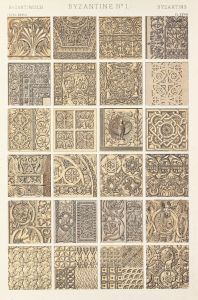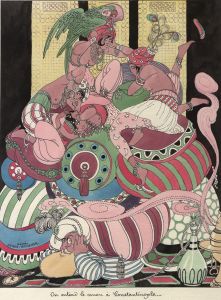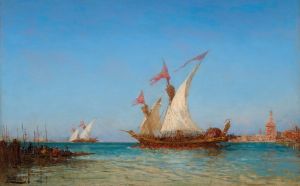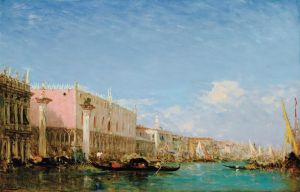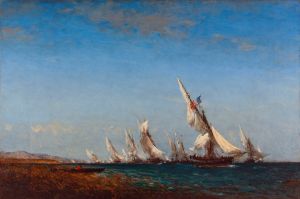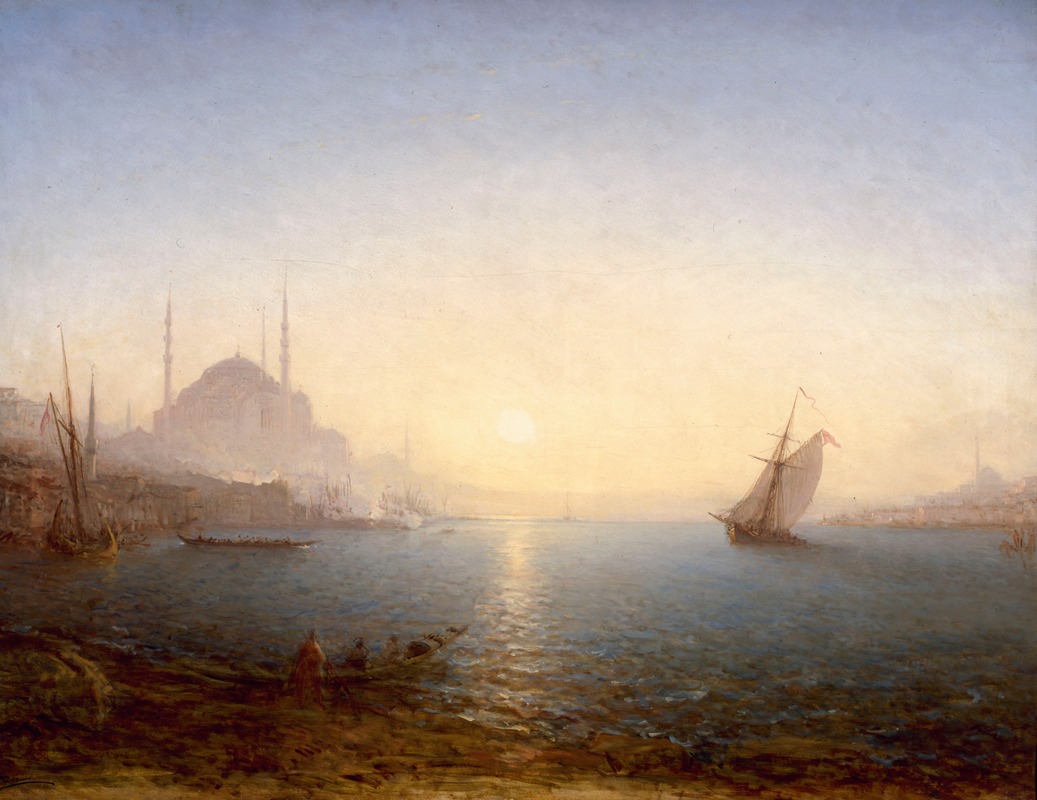
Constantinople, Sainte-Sophie Au Soleil Levant
A hand-painted replica of Félix Ziem’s masterpiece Constantinople, Sainte-Sophie Au Soleil Levant, meticulously crafted by professional artists to capture the true essence of the original. Each piece is created with museum-quality canvas and rare mineral pigments, carefully painted by experienced artists with delicate brushstrokes and rich, layered colors to perfectly recreate the texture of the original artwork. Unlike machine-printed reproductions, this hand-painted version brings the painting to life, infused with the artist’s emotions and skill in every stroke. Whether for personal collection or home decoration, it instantly elevates the artistic atmosphere of any space.
Félix Ziem's painting Constantinople, Sainte-Sophie Au Soleil Levant (translated as Constantinople, Hagia Sophia at Sunrise) is a notable work by the French artist, celebrated for his depictions of landscapes and cityscapes. Ziem (1821–1911) was a prominent figure in the 19th-century French art scene, often associated with the Barbizon School and known for his vibrant use of color and light. His works frequently drew inspiration from his extensive travels, particularly to Venice and the Ottoman Empire, including Constantinople (modern-day Istanbul).
This painting captures the iconic Hagia Sophia, one of the most significant architectural and cultural landmarks in Constantinople, bathed in the warm, golden light of sunrise. The Hagia Sophia, originally constructed as a cathedral in 537 CE during the reign of Byzantine Emperor Justinian I, later became a mosque following the Ottoman conquest of Constantinople in 1453. By the time Ziem painted this work, the Hagia Sophia had long been a symbol of the city's rich and layered history, blending Byzantine and Ottoman influences.
Ziem's portrayal of Constantinople reflects his fascination with the exotic and the picturesque, themes that resonated with 19th-century European audiences. The painting showcases his mastery of atmospheric effects, with the interplay of light and shadow creating a sense of tranquility and grandeur. The composition likely includes elements such as the surrounding cityscape, the Bosphorus, and possibly figures or boats, which were common motifs in Ziem's depictions of urban life and waterways.
Ziem's travels to the Ottoman Empire in the mid-19th century provided him with firsthand experiences of the landscapes and architecture he painted. His works from this period often emphasize the interplay between natural and man-made beauty, as well as the cultural richness of the regions he visited. Constantinople, Sainte-Sophie Au Soleil Levant is a testament to his ability to convey the majesty of iconic landmarks while imbuing them with a sense of poetic light and atmosphere.
The painting is part of Ziem's broader oeuvre, which earned him significant recognition during his lifetime. He exhibited regularly at the Paris Salon and was awarded the prestigious Legion of Honor in 1857. Today, his works are held in various public and private collections, including the Musée Ziem in Martigues, France, which is dedicated to his legacy.
Specific details about the current location or ownership of Constantinople, Sainte-Sophie Au Soleil Levant are not readily available. However, Ziem's works remain highly regarded for their technical skill and evocative portrayal of the places he visited, making this painting an important example of his artistic vision and his engagement with the cultural and architectural heritage of Constantinople.





